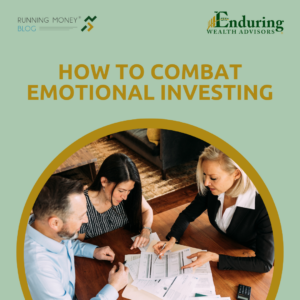Strategies for Navigating Market Volatility with Confidence
 In the unpredictable world of investing, the “fear curve” is an all-too-familiar emotional roller coaster that leads many investors to make decisions that ultimately harm their financial health. It’s this curve that drives people to buy at market peaks and sell at troughs, missing out on potentially lucrative opportunities. The irony is, the most significant opportunities often emerge when ideas are new or widely disliked, especially when market panic and despair peak. It’s during these times that investing feels most uncomfortable, yet, paradoxically, it’s also when the potentially best buying opportunities arise.
In the unpredictable world of investing, the “fear curve” is an all-too-familiar emotional roller coaster that leads many investors to make decisions that ultimately harm their financial health. It’s this curve that drives people to buy at market peaks and sell at troughs, missing out on potentially lucrative opportunities. The irony is, the most significant opportunities often emerge when ideas are new or widely disliked, especially when market panic and despair peak. It’s during these times that investing feels most uncomfortable, yet, paradoxically, it’s also when the potentially best buying opportunities arise.
Your financial professional is there to help guide you through mastering the fear curve, working to shield you from significant losses, and better positioning you for pursuing substantial gains. Let’s explore five foundational rules to help you make more rational decisions and avoid the emotional roller coaster of investing.
1. Diversify Your Assets
Diversification is the cornerstone of both building and preserving wealth. It’s advisable to spread investments across various asset classes, including stocks, bonds, cash, real estate, collectibles, cryptocurrencies, and other alternatives. Diversification not only aims to increase the potential for overall returns but also reduces risk. Research consistently shows that asset allocation is responsible for over 90% of your investment returns.
2. Tune Out Short-term Forecasts
The market’s short-term movements are largely unpredictable. Despite the plethora of forecasts, even experts often miss the mark. For the majority of investors, especially those not engaged in day trading, daily market volatility should be a non-issue. Focus instead on the broader economic and financial landscape, ignoring the daily noise that can lead to hasty decisions.
3. Have a Risk-Management Plan
Protecting your current assets is a prerequisite for wealth generation. A sound risk-management strategy involves careful position-sizing, which limits the size of any single investment within your portfolio. A good rule of thumb is to ensure that a loss on any investment does not exceed 2.5–5% of your total portfolio value. This approach helps mitigate panic selling during downturns, allowing you to maintain composure and confidence in your investment strategy.
4. Use Systematic Investing
Regular, disciplined investing—known as systematic investing—can significantly impact your financial growth over time. This can be facilitated through automatic direct deposits into brokerage accounts, participating in employer-sponsored retirement plans, and opting for dividend reinvestment programs for mutual funds, ETFs, and dividend-paying stocks. This strategy helps in building wealth steadily, leveraging the power of compounding.
5. Create a Plan and Stick to It
After establishing an investment plan, it’s crucial to adhere to it, barring annual adjustments or necessary rebalancing. Constantly shifting strategies in reaction to market volatility is a common pitfall that leads to emotional investing. By committing to a well-thought-out plan, you can work toward safeguarding against the whims of market sentiment and better position yourself for long-term confidence.
Overcoming the fear curve is not about eliminating emotions but managing them effectively to make informed, rational investment decisions. Remember, in the realm of investing, discipline and patience are virtues that often lead to prosperity.
Important Disclosures
The opinions voiced in this material are for general information only and are not intended to provide specific advice or recommendations for any individual.
Investing involves risks including possible loss of principal. No investment strategy or risk management technique can guarantee return or eliminate risk in all market environments.
There is no guarantee that a diversified portfolio will enhance overall returns or outperform a non-diversified portfolio. Diversification does not protect against market risk.
Asset allocation does not ensure a profit or protect against a loss.
Rebalancing a portfolio may cause investors to incur tax liabilities and/or transaction costs and does not assure a profit or protect against a loss.
This article was prepared by FMeX.
LPL Tracking #567517
